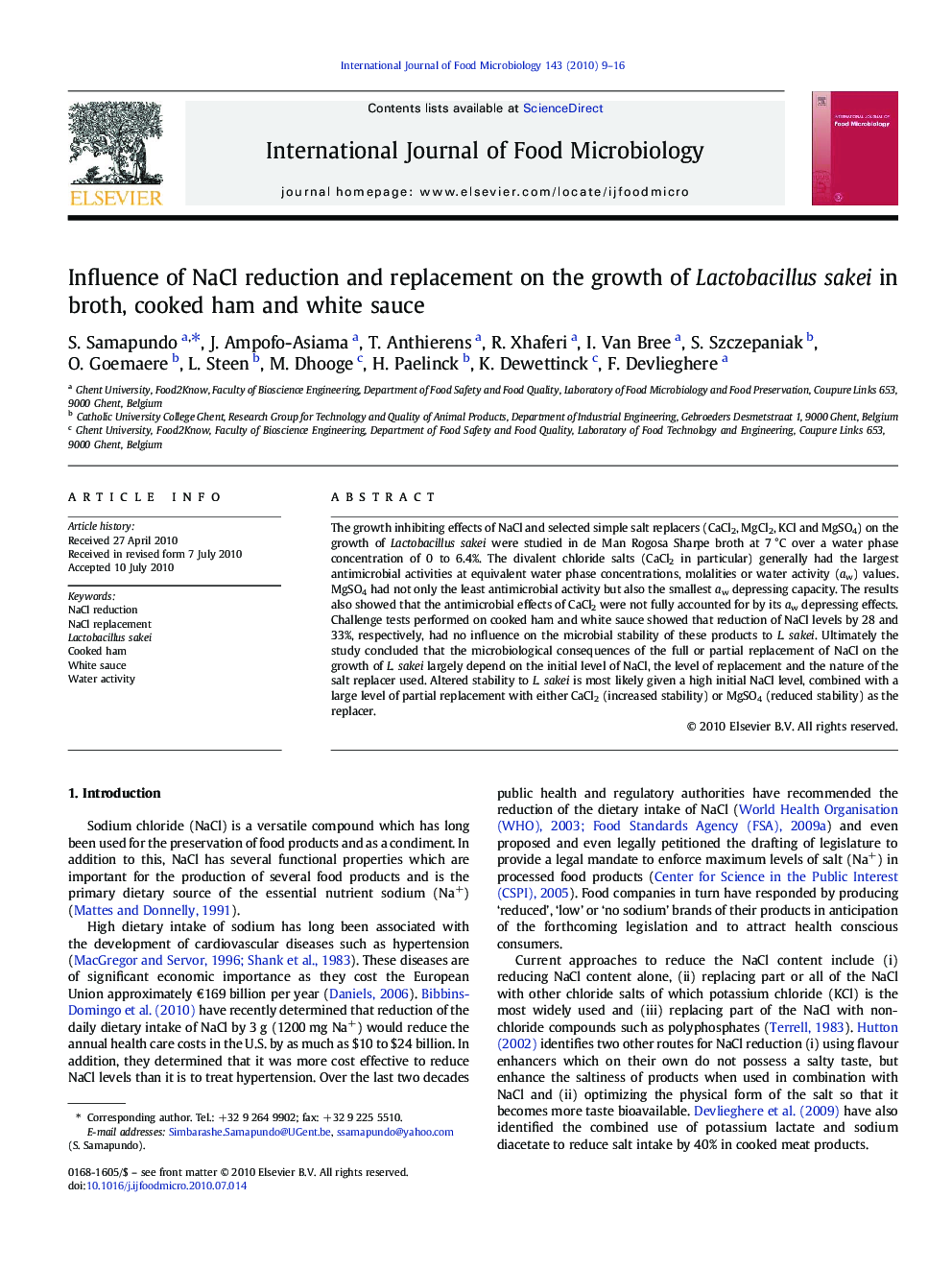| Article ID | Journal | Published Year | Pages | File Type |
|---|---|---|---|---|
| 4368082 | International Journal of Food Microbiology | 2010 | 8 Pages |
The growth inhibiting effects of NaCl and selected simple salt replacers (CaCl2, MgCl2, KCl and MgSO4) on the growth of Lactobacillus sakei were studied in de Man Rogosa Sharpe broth at 7 °C over a water phase concentration of 0 to 6.4%. The divalent chloride salts (CaCl2 in particular) generally had the largest antimicrobial activities at equivalent water phase concentrations, molalities or water activity (aw) values. MgSO4 had not only the least antimicrobial activity but also the smallest aw depressing capacity. The results also showed that the antimicrobial effects of CaCl2 were not fully accounted for by its aw depressing effects. Challenge tests performed on cooked ham and white sauce showed that reduction of NaCl levels by 28 and 33%, respectively, had no influence on the microbial stability of these products to L. sakei. Ultimately the study concluded that the microbiological consequences of the full or partial replacement of NaCl on the growth of L. sakei largely depend on the initial level of NaCl, the level of replacement and the nature of the salt replacer used. Altered stability to L. sakei is most likely given a high initial NaCl level, combined with a large level of partial replacement with either CaCl2 (increased stability) or MgSO4 (reduced stability) as the replacer.
